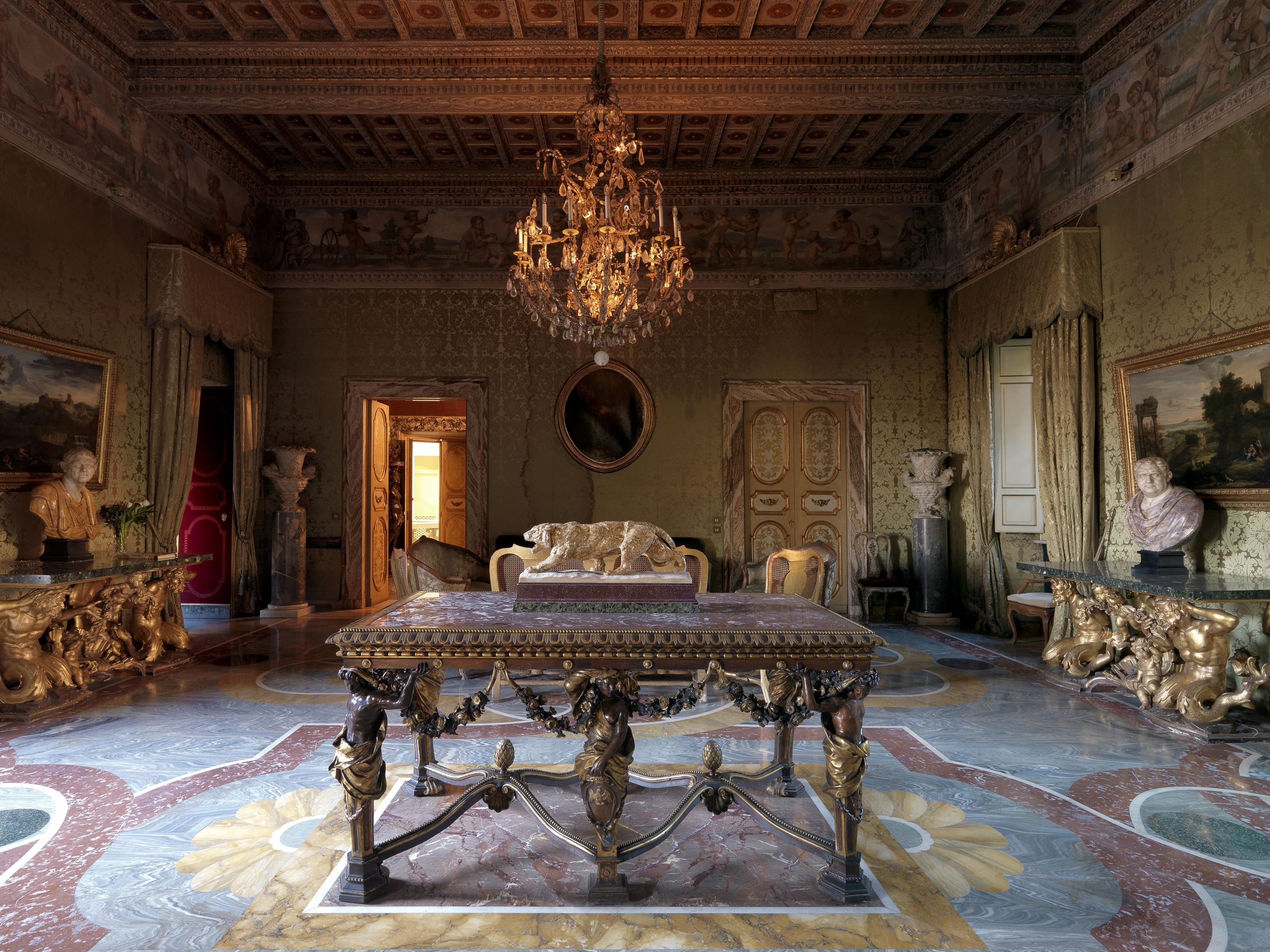THE HISTORY OF THE BUILDING
The history of the building is a perfect example of the reason why Rome is called the Eternal City. Erected on the ruins of the Theatre of Marcellus, Palazzo Orsini is located in one of the areas of greatest historical and artistic interest in Rome, between the Forum and the Tiber Island. The building is very impressive and unique in its kind as it has been used over the centuries first as a theater, then as a fortress and finally as a noble residence of the powerful Savelli, Sforza Cesarini and Orsini families. An entire wing of the Palace, on four floors, became the property of the Sovereign Military Order of Malta in 1994, thanks to a generous bequest of Countess Valeria Rossi di Montelera Litta Modignani, taking the name of Casa Litta – Palazzo Orsini.
RECOVERY PROJECT OF CASA LITTA – PALAZZO ORSINI
The building that today houses the Embassy of the Order of Malta to the Holy See, called Casa Litta – Palazzo Orsini, became the property of the Order when, in 1994, Countess Valeria Rossi di Montelera Litta Modigliani, who owned the entire wing of the building, on four floors, left it to the Order with all its furnishings, following the untimely death of her only son.
The building is located near the Tiber Island, inside the Teatro Marcello, in one of the most fascinating and suggestive areas of Rome.
After a long and intense exchange of ideas and reflections, and several contacts with the Grand Magistry of the Order, it was decided to carry out a complex project of recovery and restoration of the entire building, whose structures had suffered considerable damage over time.
The realization of the project in all its phases has been possible also thanks to the decisive support and participation of friends of great human and cultural level, who have provided the willingness to finance the work of recovery of the building.
Without envisaging significant changes to the original structure of Casa Litta – Palazzo Orsini, and maintaining the full usability of the Palazzo with all the functions necessary for the purpose for which it was intended, the project aims to transform the building from a burden on the finances of the Order into a source of income for the numerous charitable activities carried out by the Order of Malta.
The urgent and urgent interventions concerned above all the “Penthouse Floor” of the Palace, which had been unused and in very poor condition for several years. The floor, which revolves around a central courtyard enclosed by large windows, consists of a large gallery decorated with precious frescoes, a sitting room with fireplace and a long, narrow greenhouse leading to the terraces from which you can admire an extraordinary panorama, from the dome of the Synagogue, inside the Portico d’Ottavia, to the Capitol. Nothing, or almost nothing, has remained of the furnishings when the apartment was inhabited by Countess Rossi di Montelera, but the very presence of flower beds and stone benches suggests that this place, probably created to be a garden with a view, was used for receptions.
The entire renovation project, however, also involved an entire wing of the second floor of Palazzo Orsini, the one used by the Chancellery of the Embassy to the Holy See. Here the restoration has allowed to recover and enhance the functions of the reception rooms.
The intervention involved three magnificent halls, of different sizes, all furnished with ancient and precious works of art. The interventions led to the restoration and preservation, in the Green Hall, of the wooden coffered ceiling painted with floral motifs and decorative frescoes along the entire perimeter of the walls, depicting cherubs playing, interspersed at the four corners by female figures holding coats of arms and heraldic symbols.
In the Yellow Salon, the wooden coffered ceiling painted with floral motifs was restored. Eight antique tapestries decorating the walls of the Salone Verde, the Salone Giallo and the Dining Room have also been restored and cleaned. Among the most important pieces, in the Yellow Salon, there are two tapestries – of the eleven existing in the world – of the series “Landscapes with Animals” made between 1611 and 1614 by the atelier of Caterine van Den Eynde, who had started and directed one of the most famous manufactures active in Brussels between the end of the Renaissance and the beginning of the Baroque. The first tapestry, “Landscape with Ostriches,” was made by Jan Raes II, the most important weaver in Brussels, at the beginning of the 17th century. The second tapestry in the room that has been recovered, also by Jan Raes II, is “Leopard on a Pond,” belonging to the same series commissioned by Cardinal Alessandro Peretti Montalto, one of the great cardinal collectors of the 16th and 17th centuries, and first exhibited in Rome some 400 years ago.
This intense renovation project that, in spite of everything, has been tenaciously carried out even in 2020, can finally be said to be concluded and, in September 2021, Casa Litta – Palazzo Orsini will once again become the special place it originally was.
For the moment, the beautiful halls restored to their original splendor have hosted institutional meetings of the Order and some events whose proceeds were donated to support some charitable works of the Order. In this way, the ownership of part of a historical residence of great value is ideally linked to the founding mission of the Order of Malta: the reception and assistance of the sick and suffering.
However, the organization of the opening to the public is in progress and, as soon as some logistical and security issues will be properly resolved, cultural visits to the public will be activated.
Further updates will soon be available on this page of the website of the Order’s Embassy to the Holy See.

